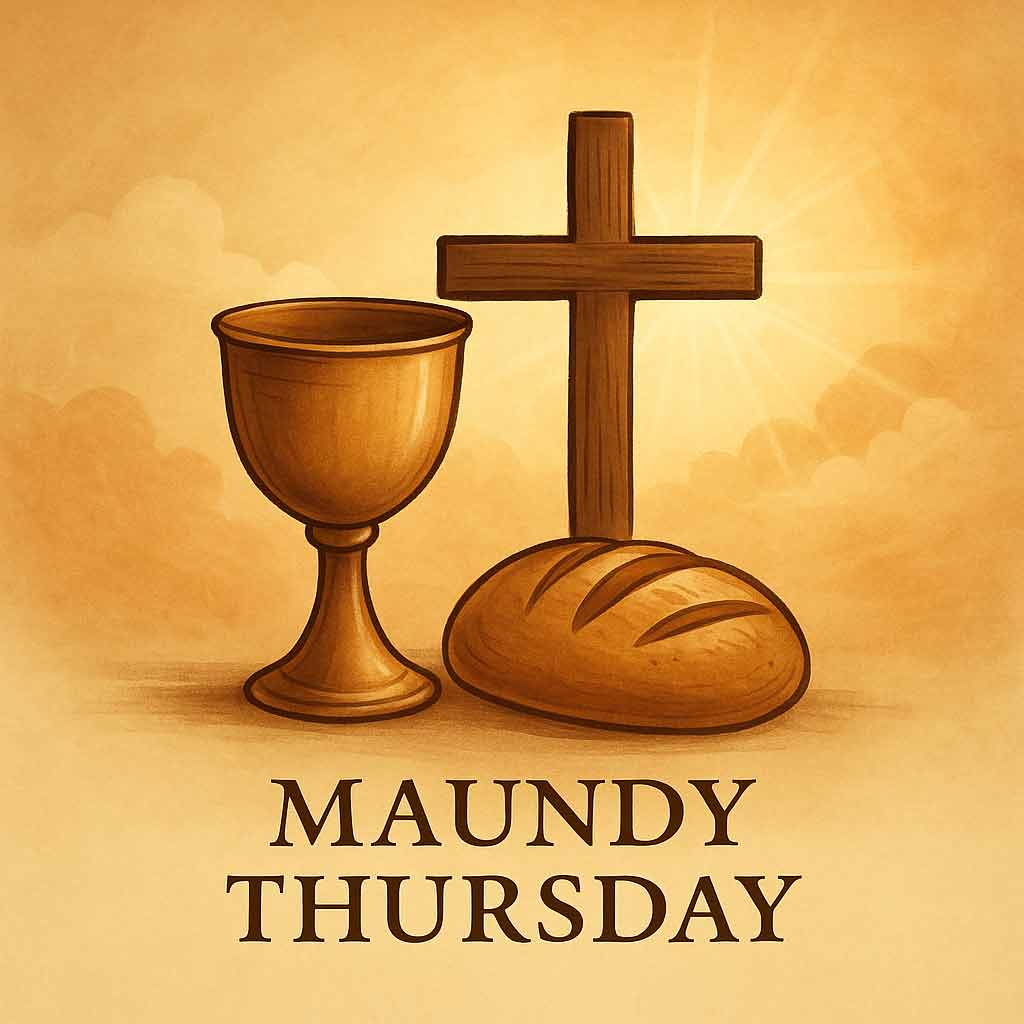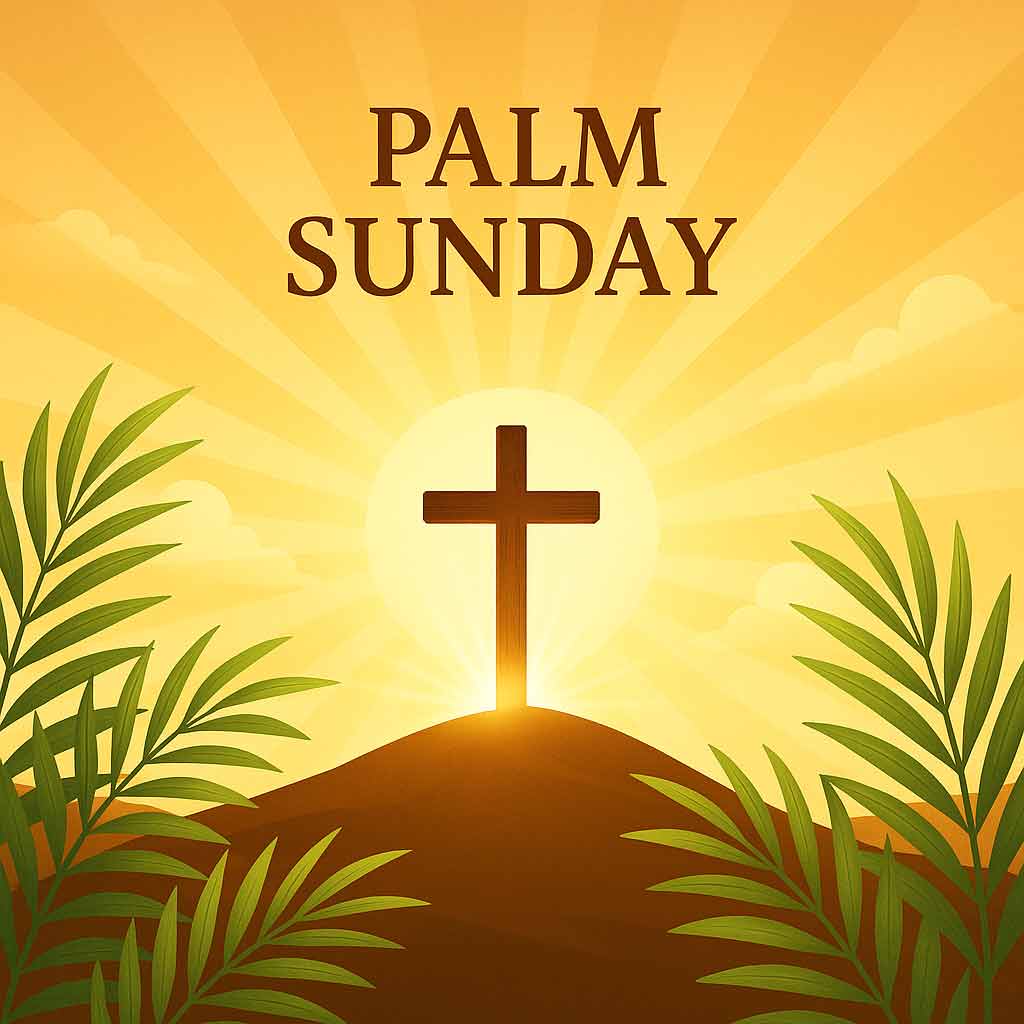Mask

Mask 🎬 Basic Info Title: Mask (2025) — a Tamil language film. Genre: Heist thriller / dark comedy thriller. Language: Tamil. Runtime: Approximately 127 minutes. Release Date: Scheduled for 21 November 2025 in theatres. 🧑💼 Key Cast & Crew Director & Writer: Vikarnan Ashok (making his directorial debut). Producer / Presenter: Vetrimaaran (via his banner Grass Root Film Company) Lead Cast: Kavin — male lead. Andrea Jeremiah — female lead and also producer. Supporting Cast includes Ruhani Sharma, Charle, Bala Saravanan, Archana Chandhoke etc. Technical Crew: Cinematography by R. D. Rajasekhar. Editing by R. Ramar. Music by G. V. Prakash Kumar. 🔍 Story / Theme Snapshot The film is said to revolve around themes of greed, betrayal and a high-stakes heist in a thriller format. 🎬 Movie Trailer
120 Bahadur

120 Bahadur ✅ Basic Info Title: 120 Bahadur. Language: Hindi. Runtime: ~137 minutes. Release date: Scheduled for 21 November 2025 in theatres in India. Director: Razneesh Ghai (also referred to as “Razy” Ghai). Producer: Farhan Akhtar (also acting), Excel Entertainment and Trigger Happy Studios. Cast: Farhan Akhtar as Major Shaitan Singh Bhati, Raashii Khanna as Shagun Kanwar (his wife in the film). 🎬 Principal Crew Director: Razneesh ‘Razy’ Ghai Story / Screenplay: Rajiv G. Menon Producers: Farhan Akhtar, Ritesh Sidhwani, Amit Chandra Cinematography: Tetsuo Nagata Editor: Rameshwar S. Bhagat Music: Composers include Amit Trivedi, Salim–Sulaiman, Amjad Nadeem Aamir 🧑✈️ Main Cast Farhan Akhtar as Major Shaitan Singh Bhati Raashii Khanna as Shagun Kanwar (Shaitan’s wife) Ankit Siwach Vivan Bhatena Ajinkya Deo Eijaz Khan Sparsh Walia 🎬 What the story is about The film is based on the real-life battle of Battle of Rezang La, fought on 18 November 1962, during the Sino‑Indian War. It centres on 120 soldiers of the C Company of the 13th Kumaon Regiment who held their post in Ladakh against overwhelming odds (reportedly ~3000 Chinese troops) in extremely harsh conditions. The narrative is a tribute to valour, sacrifice and the resilience of that troop. 🎥 Why the film is notable It marks Farhan Akhtar’s return to acting in a major role after some time. The production involved shooting in challenging locations (e.g., Ladakh at high altitude) to recreate the bitter cold and terrain of the battle. It is positioned not just as a war-film, but as a historical / patriotic film honouring unsung heroes. 📽 Trailer
Harvest Festival / Thanksgiving

Harvest Festival / Thanksgiving – A Celebration of Gratitude and Togetherness Thanksgiving is one of the most beloved holidays, celebrated primarily in the United States and Canada, but recognized around the world as a time to give thanks for life’s blessings. It is a day when families and friends gather to share meals, express gratitude, and reflect on the abundance of the year gone by. More than a feast, Thanksgiving is a celebration of gratitude, compassion, and community, reminding us of the importance of appreciating what we have and sharing with those in need. The Origins of Thanksgiving The roots of Thanksgiving trace back to the early 17th century. In 1621, the Pilgrims — English settlers who had arrived on the Mayflower — held a harvest feast in Plymouth, Massachusetts, to thank God for a bountiful harvest after a difficult first year in the New World. They invited the Wampanoag Native Americans, who had taught them vital survival skills such as planting corn and fishing. This three-day feast, often considered the “First Thanksgiving,” symbolized cooperation and gratitude among diverse communities. Over time, similar harvest festivals were celebrated in various colonies, each expressing thankfulness for blessings, peace, and prosperity. Thanksgiving became an official national holiday in the United States in 1863, when President Abraham Lincoln, in the midst of the Civil War, proclaimed a day of “Thanksgiving and Praise to our beneficent Father.” His declaration aimed to unite a divided nation through gratitude and faith. The Spirit and Meaning of Thanksgiving At its heart, Thanksgiving is about gratitude — acknowledging the gifts, both big and small, that enrich our lives. It invites us to pause from the busyness of daily life and reflect on what truly matters: family, friendships, health, love, and faith. The essence of Thanksgiving goes beyond words or rituals. It is an opportunity to express appreciation, strengthen relationships, and extend kindness. The holiday reminds people that gratitude should not be confined to one day a year but practiced as a way of life. Spiritually, Thanksgiving resonates with nearly all faith traditions, which emphasize gratitude as a pathway to inner peace and joy. It teaches that when we focus on what we have rather than what we lack, we cultivate contentment and generosity. Traditions and Celebrations Modern Thanksgiving celebrations are rich with customs that foster togetherness and joy. Families and friends gather around tables filled with traditional dishes such as roast turkey, stuffing, mashed potatoes, cranberry sauce, and pumpkin pie. The shared meal is symbolic — not only of abundance but also of unity and hospitality. Before the meal begins, many families take turns expressing what they are thankful for. This simple yet heartfelt act sets the tone for the day, reinforcing the purpose of gratitude and reflection. Beyond the dining table, Thanksgiving is also a time of acts of service. Many communities organize food drives, serve meals to the homeless, or volunteer at shelters, embodying the true spirit of giving. Parades, football games, and family gatherings add a sense of festivity and fun, making Thanksgiving both a joyful and meaningful holiday. In Canada, Thanksgiving is celebrated on the second Monday of October, coinciding with the harvest season, while in the United States, it falls on the fourth Thursday of November. Despite regional differences, the message of thankfulness remains universal. The Message of Thanksgiving Thanksgiving is more than a day of feasting — it is a philosophy of gratitude. It reminds us to slow down, appreciate the present moment, and recognize the blessings that surround us daily. In a world often focused on ambition and material success, Thanksgiving brings us back to the basics — faith, family, love, and gratitude. It teaches that true happiness is not found in possessions but in meaningful relationships and acts of kindness. The spirit of Thanksgiving can extend far beyond the holiday itself. When gratitude becomes a daily habit, it transforms how we see the world — turning challenges into lessons and ordinary days into blessings. Thanksgiving is a beautiful reminder that gratitude is the heart’s memory — a conscious acknowledgment of all that is good in our lives. It unites families, strengthens communities, and spreads kindness across generations. As we gather around the table, share laughter, and give thanks, we are reminded that life’s greatest blessings often come from the simplest joys — a shared meal, a warm embrace, and a grateful heart. Happy Thanksgiving — may your day be filled with warmth, love, and gratitude that lasts all year long.
Maundy Thursday

Maundy Thursday – A Day of Love, Service, and Remembrance Maundy Thursday, also known as Holy Thursday, is one of the most profound and sacred days in the Christian calendar. It commemorates the Last Supper of Jesus Christ with His disciples, an event that took place the evening before His crucifixion. Falling during Holy Week, Maundy Thursday marks the beginning of the Easter Triduum — the three days that include Good Friday, Holy Saturday, and Easter Sunday. This day carries deep spiritual significance, as it reflects the themes of love, humility, sacrifice, and service, which form the foundation of the Christian faith. The Meaning Behind Maundy Thursday The word “Maundy” is derived from the Latin term “mandatum”, meaning “command”. It refers to the new commandment that Jesus gave His disciples during the Last Supper: “A new command I give you: Love one another. As I have loved you, so you must love one another.”(John 13:34) This simple yet powerful command encapsulates the heart of Jesus’s teachings — that love should be the guiding force of every believer’s life. Maundy Thursday, therefore, serves as a reminder of this divine mandate: to love selflessly and serve others with humility. The Last Supper: The Gift of Communion At the Last Supper, Jesus gathered His twelve disciples in an upper room in Jerusalem. During the meal, He broke bread and shared wine with them, saying, “This is My body, which is given for you; do this in remembrance of Me.”(Luke 22:19) With these words, Jesus instituted the Holy Eucharist — also known as Holy Communion or the Lord’s Supper. This sacrament, central to Christian worship, symbolizes Jesus’s sacrifice for humanity and serves as a continual reminder of His love and redemption. Through the bread and wine, believers remember His body and blood offered on the cross. Every time Christians partake in the Eucharist, they are invited to reflect on His sacrifice and renew their faith and gratitude. The Washing of the Feet: A Lesson in Humility Another powerful event of Maundy Thursday is the washing of the disciples’ feet. As recorded in the Gospel of John, Jesus took on the role of a servant, washing the feet of each disciple — a task typically reserved for the lowliest household servant. When Peter objected, Jesus gently reminded him, “If I do not wash you, you have no part with Me.” This act was more than symbolic; it was a profound lesson in humility and servant leadership. Jesus demonstrated that true greatness lies not in authority, but in service. He showed that love must be expressed through action — by caring for and serving others selflessly. Many churches around the world reenact this act of service on Maundy Thursday, with priests or pastors washing the feet of congregants as a living example of Christ’s humility. The Night of Prayer and Betrayal After the meal, Jesus went to the Garden of Gethsemane to pray. It was here that He experienced immense anguish, knowing the suffering that awaited Him. His prayer — “Not my will, but Yours be done” — reflects His complete obedience to God’s plan. In that same garden, Jesus was betrayed by Judas Iscariot and arrested by Roman soldiers, marking the beginning of His Passion. This moment of sorrow and surrender reminds believers of the cost of salvation and the depth of Christ’s love. How Maundy Thursday Is Observed Maundy Thursday is observed with solemnity and reverence across Christian denominations. Churches hold special services that include the Holy Communion and sometimes the washing of feet ceremony. The altar is often stripped bare after the service, symbolizing Jesus being abandoned and the beginning of His suffering. In some traditions, believers spend time in silent prayer and meditation, reenacting Jesus’s vigil in Gethsemane. Others engage in acts of charity, reflecting the spirit of service that defines the day. The Message of Maundy Thursday Maundy Thursday stands as a powerful reminder of selfless love, humility, and service. It invites Christians to reflect on their relationships with others — to forgive, to serve, and to love unconditionally. It reminds us that love is not just a feeling, but an action — a choice to put others before ourselves. The bread, the wine, and the washing of feet all speak of one truth: to follow Christ is to live a life of compassion, humility, and sacrifice. As the world prepares for the sorrow of Good Friday and the joy of Easter, Maundy Thursday bridges the two with a message of love and service. It calls every believer to remember the example set by Jesus — to love one another as He loved us. In this spirit, Maundy Thursday is not just a remembrance of the past but a call to live out that same love today. Through humble acts and open hearts, we honor the commandment that defines our faith: “Love one another.”
Palm Sunday

Palm Sunday: – A Celebration of Faith, Humility, and Hope Palm Sunday marks the beginning of Holy Week, the most sacred week in the Christian calendar, leading up to Easter Sunday. It commemorates the triumphal entry of Jesus Christ into Jerusalem, an event that took place just days before His crucifixion. The day symbolizes both joy and reflection, celebrating Jesus as the King and Savior, yet foreshadowing the suffering and sacrifice that were to follow. The Significance of Palm Sunday According to the Gospels of the New Testament, Jesus entered Jerusalem riding on a donkey while crowds of people welcomed Him by spreading their cloaks and waving palm branches along His path. They shouted, “Hosanna! Blessed is He who comes in the name of the Lord!” (John 12:13). The palm branches were a traditional symbol of victory and peace, and the people hailed Jesus as the long-awaited Messiah who would deliver them from oppression. However, Jesus’s choice to ride a humble donkey, rather than a warhorse, was deeply symbolic. It reflected His message of peace, humility, and spiritual kingship, rather than worldly power. This moment demonstrated that His kingdom was not of this earth — it was a kingdom of love, mercy, and truth. Palm Sunday reminds believers that true leadership and greatness are found in humility and service, not in dominance or pride. It serves as a call to reflect on how Jesus redefined power — not as control over others, but as selfless love and sacrifice for humanity. Biblical Context and Spiritual Meaning The event of Palm Sunday is recorded in all four Gospels — Matthew, Mark, Luke, and John — underscoring its importance. For the people of Jerusalem, the day was one of joy and expectation. Yet within days, the same voices that cried “Hosanna!” would call out “Crucify Him!” This sudden change captures the fragility of human faith and the depth of Christ’s compassion in the face of betrayal. Spiritually, Palm Sunday invites Christians to reflect on their own faith journey — to ask whether their praise is steadfast or conditional. It challenges believers to remain faithful to God not only in moments of triumph but also through trials and suffering. The palms themselves hold deep meaning. They represent victory over sin and death, foreshadowing the resurrection of Christ on Easter. In many Christian traditions, the palm fronds blessed on Palm Sunday are later burned, and their ashes are used for Ash Wednesday services the following year — symbolizing the cycle of repentance, forgiveness, and renewal. How Palm Sunday Is Celebrated Palm Sunday is celebrated with joy and reverence in Christian communities around the world. Churches hold special processions, with worshippers carrying palm leaves, olive branches, or other greenery. These palms are often blessed and taken home as symbols of protection and devotion. During church services, passages from the Gospels narrating Jesus’s entry into Jerusalem are read aloud. Hymns of praise such as “Hosanna in the Highest” fill the air, reminding believers of the jubilant welcome Jesus received. Some churches also reenact the procession, with children playing a special role, waving palms and singing songs of worship. In many cultures, the day is also one of quiet reflection — preparing the heart for the solemn events of Maundy Thursday, Good Friday, and ultimately, the joy of Easter Sunday. It is a time to reaffirm faith, renew hope, and embrace the path of humility that Jesus walked. The Message of Palm Sunday Palm Sunday carries a timeless message — one of faith, peace, and perseverance. It invites believers to welcome Christ not only with words but with open hearts and lives of compassion. The image of Jesus entering Jerusalem on a donkey reminds everyone that true glory lies in humility, and that victory comes through love and service. As the palms are lifted high, they symbolize not only the triumph of Jesus but also the believer’s commitment to follow Him in humility and grace. The day bridges the joy of celebration with the sorrow of the Passion, reminding all that suffering can lead to redemption, and darkness to light. Palm Sunday is more than a historical remembrance; it is a spiritual awakening. It calls Christians to prepare their hearts for Holy Week — to walk with Jesus through His suffering, death, and resurrection. It reminds us that every journey of faith begins with praise, passes through sacrifice, and ends in hope. As the crowd once cried “Hosanna!” — meaning “Save us” — so too do believers today lift their prayers for peace, mercy, and salvation. Palm Sunday thus remains a living symbol of hope — a reminder that even in the face of trials, God’s promises endure, and His light will always prevail.
Easter Sunday

Easter Sunday – The Celebration of Hope and Resurrection Easter Sunday is one of the most important and joyous occasions in the Christian calendar. It marks the resurrection of Jesus Christ from the dead, three days after His crucifixion on Good Friday. This day stands as the foundation of Christian faith — a symbol of victory over sin, suffering, and death, and the promise of eternal life for all who believe. The resurrection of Christ is not merely a historical event but a living message of hope, renewal, and divine love that continues to inspire millions of people across the world. The Significance of Easter According to the New Testament, after Jesus was crucified and buried in a tomb, His followers were overcome with sorrow and despair. However, on the third day, the tomb was found empty — a sign that Jesus had risen, as He had foretold. The risen Christ appeared to His disciples, bringing them peace and reaffirming their faith. Easter, therefore, represents the fulfillment of God’s promise — that life conquers death and good triumphs over evil. It affirms the belief that Jesus’s sacrifice on the cross redeemed humanity, and His resurrection opened the way for salvation. The name “Easter” is believed to have originated from Eostre, a pagan festival celebrating spring and renewal, symbolizing new beginnings — a fitting metaphor for the resurrection and the new life it brings. The Journey to Easter Easter does not stand alone but is preceded by a period of preparation and reflection. It follows Lent, a 40-day season of fasting, prayer, and repentance, symbolizing the time Jesus spent fasting in the desert. The week leading up to Easter, known as Holy Week, is especially sacred in Christian tradition. It begins with Palm Sunday, which commemorates Jesus’s triumphal entry into Jerusalem. Maundy Thursday marks the Last Supper — the final meal Jesus shared with His disciples — where He instituted the Holy Communion. Good Friday follows, remembering the crucifixion and death of Christ. The silence of Holy Saturday gives way to the dawn of Easter Sunday — the glorious day of resurrection. This sequence of events captures the essence of Christian faith: sacrifice, sorrow, and ultimately, joy and redemption. How Easter Is Celebrated Easter Sunday is celebrated with great joy and devotion across the world. Churches hold special sunrise services, symbolizing the rising of Christ and the new light of life. Bells ring out to announce the resurrection, and worshippers gather to sing hymns of praise, such as “Christ the Lord Is Risen Today” and “Hallelujah.” The Easter Vigil, held the night before, is one of the most beautiful liturgical services in the Christian calendar. Candles are lit to symbolize the triumph of light over darkness and life over death. Easter celebrations also include joyous community traditions. Families come together for festive meals, often featuring symbolic foods like eggs, lamb, and bread, representing new life and sacrifice. The Easter egg, a universal symbol of rebirth, is often exchanged, decorated, or hidden in fun egg hunts, especially for children. In many cultures, Easter lilies adorn homes and churches, symbolizing purity and resurrection. The Deeper Message of Easter Beyond the celebrations, Easter carries a profound message — that hope is eternal, even in the darkest times. It reminds believers that no matter how deep the sorrow or how heavy the cross they carry, there is always resurrection, renewal, and divine grace waiting at the end. Easter challenges people to rise above despair, to forgive, and to live with love and faith. It calls for a transformation of heart and spirit — to let go of the past and embrace new beginnings. The empty tomb is not just a historical event; it is a spiritual truth — a symbol that death does not have the final word, and that faith can overcome all. Easter Sunday is more than a festival — it is a celebration of life, renewal, and victory. It proclaims that love is stronger than hatred, light is greater than darkness, and life eternal is assured through Christ’s resurrection. As Christians greet one another with the words, “He is Risen!” they echo a message that has transcended centuries: hope lives on. Easter reminds the world that every ending holds the promise of a new beginning. It is a day to rejoice, to renew one’s faith, and to celebrate the eternal truth that through Christ, all things are made new. Happy Easter — a celebration of life, hope, and everlasting joy.
Good Friday

Good Friday A Day of Reflection, Sacrifice, and Faith Good Friday stands as one of the most solemn and sacred days in the Christian calendar. Observed during Holy Week, two days before Easter Sunday, it commemorates the crucifixion and death of Jesus Christ at Calvary. While the word “Good” may seem paradoxical for a day marked by suffering and sorrow, Christians regard it as “good” because it represents the ultimate act of love and redemption — the day humanity was saved through the sacrifice of Christ. The Meaning and Significance of Good Friday Good Friday reminds believers of the depth of God’s love for humankind. According to the New Testament, Jesus willingly endured suffering, humiliation, and crucifixion to atone for the sins of the world. His death symbolizes both the gravity of sin and the boundless mercy of God, bridging the gap between divinity and humanity. The events leading to Good Friday began on Maundy Thursday, when Jesus shared the Last Supper with His disciples. During this meal, He broke bread and shared wine, symbolizing His body and blood, and instructed them to continue this ritual in remembrance of Him — a practice that became the Holy Communion or Eucharist. Afterward, Jesus prayed in the Garden of Gethsemane, where He was later betrayed by Judas Iscariot and arrested by Roman soldiers. He was brought before the Jewish council and then before Pontius Pilate, the Roman governor, who, under pressure from the crowd, sentenced Him to be crucified. Jesus was scourged, mocked, and forced to carry His own cross to Golgotha — the “Place of the Skull.” At around noon, He was nailed to the cross, and after hours of excruciating pain, He uttered His final words, “Father, into Your hands I commend my spirit.” By 3 p.m., Jesus breathed His last. The Gospel accounts describe a moment of darkness and an earthquake, symbolizing the cosmic significance of His death. Though it is a day of mourning, Good Friday is “good” because it marks the fulfillment of God’s promise of salvation. Through Jesus’s suffering and death, Christians believe that humanity’s sins were forgiven and that eternal life was made possible through faith in Him. How Good Friday Is Observed Across the Christian world, Good Friday is observed with reverence, fasting, and prayer. The day is often marked by church services, scripture readings, and reflections on the Passion of Christ — the series of events leading to His crucifixion. Many churches hold Stations of the Cross, a devotional service that retraces the steps of Jesus from His condemnation to His burial. This ritual allows worshippers to meditate on His sacrifice and the virtues of patience, humility, and forgiveness. In some traditions, the Three Hours’ Agony is observed from noon to 3 p.m., the time when Jesus hung on the cross. During these hours, believers meditate on His “Seven Last Words” — powerful statements that reveal His compassion, forgiveness, and divine purpose even in His suffering. Church altars are often left bare, symbolizing grief, while hymns of lamentation and reflection are sung. The faithful abstain from celebrations and instead spend the day in quiet devotion, preparing spiritually for the joy of Easter Sunday, which celebrates Christ’s resurrection and triumph over death. The Message of Good Friday Good Friday carries a timeless message of sacrifice, forgiveness, and hope. It teaches that love is stronger than hatred, and that through suffering comes redemption. It calls believers to selflessness — to bear one’s cross with faith and courage, just as Christ did. The cross, once a symbol of shame, has become the greatest emblem of love and victory. It stands as a reminder that through the darkest moments, light and salvation await those who trust in God’s plan. In a broader sense, Good Friday speaks to all humanity. It reminds people of compassion, forgiveness, and the importance of standing for truth and justice, even when it demands personal sacrifice. Good Friday is not merely a day of sorrow but one of profound gratitude. It invites believers to reflect on the immense love of Christ, who gave His life for the redemption of the world. His crucifixion and death paved the way for resurrection and eternal hope. As Christians across the globe bow in prayer on this sacred day, they are reminded that every act of love, forgiveness, and sacrifice carries the power to transform lives. The message of Good Friday endures — that from pain arises redemption, and from death springs new life.
Christmas

Christmas – Christmas: A Celebration of Love, Hope, and Joy Christmas is one of the most cherished and widely celebrated festivals in the world. Observed every year on December 25, it marks the birth of Jesus Christ, who is regarded by Christians as the Son of God and the Savior of humanity. While rooted in religious tradition, Christmas has grown to become a universal celebration of love, compassion, and togetherness, transcending cultures, faiths, and national boundaries. The Significance of Christmas At its heart, Christmas commemorates the miraculous birth of Jesus Christ over 2,000 years ago in Bethlehem. According to the Christian faith, Jesus was born to the Virgin Mary through divine intervention — an event that fulfilled the ancient prophecy of the coming of a Messiah. His birth brought a message of peace, forgiveness, and salvation to a world in need of hope. The word “Christmas” is derived from “Christ’s Mass,” referring to the special church service held in honor of Jesus. For Christians, the festival is not just about rejoicing in His birth but also about reflecting on the values He taught — love for one another, humility, and kindness to all. The Nativity Story forms the central theme of the celebration. It tells how Mary and Joseph traveled to Bethlehem, where Jesus was born in a humble manger, surrounded by shepherds and later visited by wise men from the East who brought gifts of gold, frankincense, and myrrh. This story symbolizes simplicity, humility, and the divine presence in the most ordinary circumstances. How Christmas Is Celebrated Christmas celebrations vary across the world, blending religious observances with cultural traditions. The festivities often begin with Advent, a period of preparation and anticipation during the four weeks leading up to Christmas Day. Churches hold special services, prayers, and carol singing, while homes are decorated with stars, lights, and evergreen trees. One of the most beloved symbols of Christmas is the Christmas tree. Decorated with ornaments, bells, and lights, it represents eternal life and the joy of the season. The star placed at the top of the tree signifies the Star of Bethlehem that guided the wise men to the birthplace of Jesus. Midnight Mass on Christmas Eve is one of the most significant parts of the celebration for Christians. Families gather in churches to offer prayers and sing hymns rejoicing in the birth of Christ. The sound of carols such as “Silent Night,” “O Holy Night,” and “Joy to the World” fills the air with devotion and happiness. Apart from its spiritual essence, Christmas is also a time of festive cheer and goodwill. Exchanging gifts is a long-standing tradition that reflects the act of giving by the wise men to the infant Jesus. Santa Claus, or Saint Nicholas, has become a universal symbol of generosity and joy, bringing smiles to children around the world. Families exchange presents, share festive meals, and decorate their homes with candles, wreaths, and holly. Food is another important part of Christmas celebrations. Traditional delicacies such as plum cake, puddings, roasted turkey, and cookies are prepared and shared with friends and neighbors. The act of sharing meals fosters community spirit and reminds people of the importance of generosity. The Spirit of Christmas Beyond the decorations and festivities, Christmas carries a timeless message — love, peace, and hope. It invites people to look inward, forgive others, and spread kindness. The festival encourages acts of charity, reminding believers of Jesus’s teaching: “It is more blessed to give than to receive.” In today’s world, where divisions often overshadow harmony, the spirit of Christmas serves as a powerful reminder of unity and compassion. It transcends religion and geography, bringing people together in celebration of humanity’s shared values. Christmas is more than a holiday; it is a season of the heart — a celebration of the divine love that entered the world through the birth of Jesus Christ. It inspires people to embrace kindness, give selflessly, and nurture peace in their hearts and communities. Whether celebrated with grandeur or simplicity, the essence of Christmas remains the same — to rejoice in love, cherish togetherness, and renew hope for a better world. Merry Christmas – may peace and joy fill every heart this season and always.
Classic Caesar Salad

Classic Caesar Salad – A Feast from the Paradise on Earth 🥬 Health Benefits of Classic Caesar Salad The Classic Caesar Salad is a timeless favorite that combines crisp romaine lettuce, creamy dressing, crunchy croutons, and Parmesan cheese. While it’s often enjoyed for its rich flavor and satisfying crunch, this salad also offers several nutritional benefits when made with fresh, wholesome ingredients and balanced dressing portions. 💚 1. Rich in Vitamins and Minerals Romaine lettuce — the base of a Caesar salad — is packed with vitamins A, C, and K, along with folate and calcium. Vitamin A supports healthy vision and immune function. Vitamin K plays a vital role in bone strength and blood clotting. Folate contributes to red blood cell formation and overall cell health. 🥗 A single serving provides a powerful nutrient boost while remaining low in calories. 🦴 2. Strengthens Bones Parmesan cheese, a key ingredient in Caesar salad, is an excellent source of calcium and phosphorus, essential for maintaining strong bones and teeth.It also contains vitamin D and protein, which aid in calcium absorption and muscle support. 🧀 Just a sprinkle of Parmesan adds both flavor and nutrition. ❤️ 3. Promotes Heart Health When prepared with olive oil-based Caesar dressing, the salad becomes a source of healthy monounsaturated fats that support cardiovascular health.These fats help lower bad (LDL) cholesterol and raise good (HDL) cholesterol levels.Additionally, lettuce and lemon juice add antioxidants that protect against oxidative stress and inflammation. ⚖️ 4. Helps with Weight Management Despite its creamy texture, a properly portioned Caesar salad can be a light, filling, and balanced meal. Lettuce provides fiber and hydration. Olive oil and cheese offer healthy fats that enhance satiety. The combination keeps you full longer, reducing overeating or snacking. 🍋 Opt for grilled chicken or tofu toppings to make it a complete, protein-rich meal. 🧠 5. Supports Brain Function The healthy fats from olive oil and cheese, along with vitamin B6 and choline, contribute to improved memory and cognitive performance.These nutrients help in maintaining neuronal integrity and overall brain health, especially when consumed as part of a balanced Mediterranean-style diet. 🧘♀️ 6. Aids Digestion Romaine lettuce contains both water and fiber, which promote healthy digestion and regular bowel movements.The fiber also supports gut bacteria balance, improving nutrient absorption and overall digestive wellness. 🌿 In Summary Benefit Key Nutrient Function Eye & Skin Health Vitamin A Enhances vision & skin tone Bone Strength Calcium, Vitamin K Strengthens bones & teeth Heart Health Monounsaturated fats Lowers bad cholesterol Weight Control Fiber, Protein Keeps you full longer Brain Function Healthy fats, B vitamins Improves cognition Digestion Water & fiber Aids gut health 🥬 Classic Caesar Salad Crisp romaine, creamy dressing, and crunchy croutons — a timeless favorite. Ingredients: 1 large romaine lettuce head, chopped 1 cup croutons ¼ cup grated Parmesan cheese Caesar dressing (store-bought or homemade) Instructions: Toss lettuce with Caesar dressing. Add croutons and Parmesan. Mix gently and serve chilled.
Avocado & Mango Salad

Avocado & Mango Salad – A tropical, refreshing salad with creamy and sweet notes. 🥑 Health Benefits of Avocado & Mango Salad The Avocado & Mango Salad is a tropical fusion of flavor and nutrition — creamy avocado meets juicy mango for a refreshing, vibrant, and wholesome dish. This salad is not only visually appealing but also offers a powerhouse of vitamins, minerals, and healthy fats that support overall health and vitality. 💚 1. Heart-Healthy Good Fats Avocados are rich in monounsaturated fats, which are heart-friendly and help lower “bad” LDL cholesterol while raising “good” HDL cholesterol.When paired with the potassium in mango, this salad helps maintain healthy blood pressure and supports cardiovascular health. 🥑 Regular avocado consumption is linked to a lower risk of heart disease. 🌈 2. Packed with Antioxidants Both avocado and mango are bursting with antioxidants like vitamin C, E, and carotenoids.These compounds help fight oxidative stress, reduce inflammation, and protect cells from free radical damage — promoting long-term wellness and glowing skin. 🍋 The combination provides an excellent immune boost too. ✨ 3. Promotes Glowing Skin and Healthy Hair Mango is rich in vitamin A and beta-carotene, which are essential for skin repair and radiance.Avocado contributes vitamin E and healthy oils that hydrate the skin and add shine to hair.Together, they help slow aging signs and maintain a youthful appearance. 💪 4. Aids in Digestion Mangoes provide natural enzymes like amylases, which improve digestion by breaking down carbohydrates, while avocado adds fiber that supports smooth bowel movements and gut health.This salad is gentle on the stomach and helps prevent bloating. ⚖️ 5. Supports Weight Management Despite its creamy texture, avocado is low in carbohydrates and high in healthy fats and fiber, which promote satiety and reduce hunger.Mango provides natural sweetness and quick energy, making this salad a balanced, guilt-free snack or light meal. 🍽️ Perfect for those aiming to eat healthy without compromising on taste. 🧠 6. Boosts Brain Function Avocados are a rich source of omega-3 fatty acids and folate, which enhance cognitive performance and memory.Mango adds vitamin B6, essential for neurotransmitter function — together, they help support focus and mood regulation. 💧 7. Hydrates and Refreshes Both mango and avocado have high water content, making this salad hydrating and rejuvenating, especially in warm weather.It’s an excellent post-workout or mid-day refreshment, replenishing lost fluids and electrolytes naturally. 🌿 In Summary Benefit Key Nutrients Function Heart Health Monounsaturated fats, potassium Lowers cholesterol, balances BP Skin & Hair Vitamin A, E, antioxidants Improves skin glow & hair strength Digestion Fiber, enzymes Enhances gut health Brain Function Omega-3, folate, B6 Supports focus and mood Immunity Vitamin C Fights infections Weight Management Fiber, healthy fats Promotes fullness, reduces cravings Avocado & Mango Salad A tropical, refreshing salad with creamy and sweet notes. Ingredients: 1 ripe mango, cubed 1 avocado, cubed ½ red onion, finely chopped 1 tbsp lime juice 1 tbsp olive oil Salt and chili flakes (optional) Instructions: Combine mango, avocado, and onion in a bowl. Add lime juice and olive oil. Season with salt and chili flakes. Mix gently to avoid mashing avocado.
